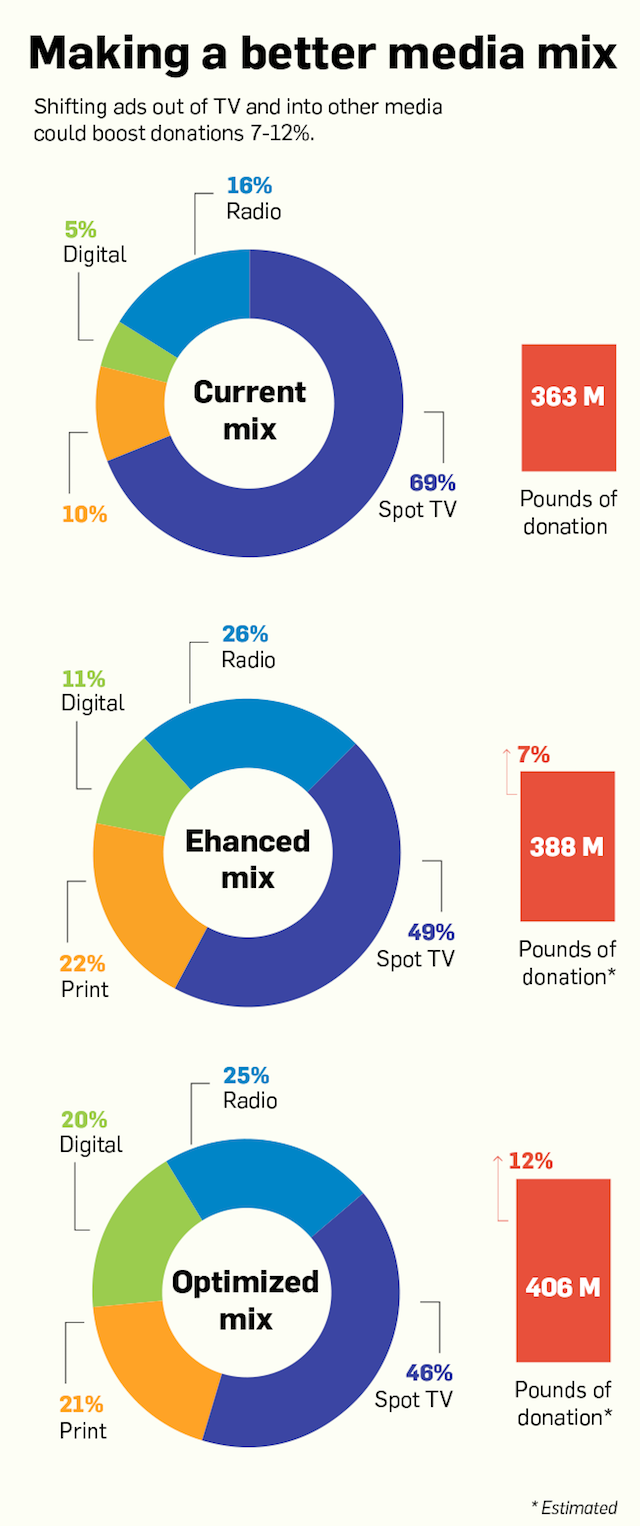19 June 2016 | Articles, Articles 2016, Communications | By Christophe Lachnitt
Optimizing Nonprofits’ Fundraising Communications
A joint study by Millward Brown and The Ad Council explores the media mix used to drive charitable donations. But another aspect may have an even greater impact.
The study by Millward Brown and The Ad Council analyzes the impact of an advertising campaign run by Goodwill. Aired between September 2013 and April 2015, it benefited from a media-buying budget of 94 million dollars donated by media partners. It resulted in 363 million pounds of donations (clothing, furniture, appliances, toys…).
The two main conclusions of the study were as follows:
- While digital only made up 5 percent of the media campaign budget, it drove 49 percent of donations. In comparison, local television made up 69 percent of donated media but accounted for “only” 33 percent of donations. However, local television remains useful because of its scale effect. Radio and print media were more cost-effective than television in driving donations.
- The secret sauce of the perfect media mix for such campaigns lies in the balance between digital media’s targeting and traditional media’s reach. In this case, augmenting the relative weight of digital media in the media mix would result in a 12 percent increase of donations to Goodwill (see the graph below). Obviously, this analysis must be performed for each campaign.
However, another aspect can have a profound impact on the effectiveness of nonprofits (continue reading about it below the fold).

(CC) Millward Brown & The Ad Council via AdWeek
I discovered this issue a few months ago when I watched a TED talk given by activist Dan Pallotta (see below) that covers, in an unusual environment, one of my favorite management principles: Fostering innovation by accepting failure.
He argues that the way nonprofits work is reducing their effectiveness since they are prevented from taking risks:
“You and I know when you prohibit failure, you kill innovation. If you kill innovation in fundraising, you can’t raise more revenue; if you can’t raise more revenue, you can’t grow; and if you can’t grow, you can’t possibly solve large social problems.“
For example, Pallotta posits that it is counter-productive to limit the compensation of nonprofits’ executives:
“You want to make 50 million dollars selling violent video games to kids, go for it. We’ll put you on the cover of Wired magazine. But you want to make half a million dollars trying to cure kids of malaria, and you’re considered a parasite yourself.“
More broadly, Pallotta highlights the lack of logic behind the financial management of the overwhelming majority of nonprofits. The issue, he says, is that they confuse morality with frugality. What matters isn’t the rate of nonprofits’ overhead; it is the problems they solve.
Such a cultural change would expand the impact of nonprofits, and not only in the way they manage their fundraising communications.


